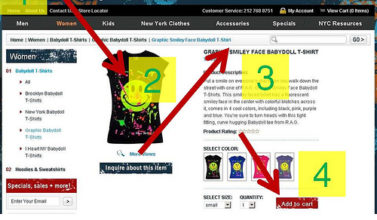
When you think of content marketing, what comes to mind first? Content marketing is not just about writing blogs, social media posts or creating viral video content, it’ about storytelling. In fact, the concept of content marketing has been around longer than the internet. Particularly good examples include comic books such as Marvel and the effective storytelling in movies, especially the Star Wars saga.
In modern day content marketing, the internet has created a plethora of opportunities. Social media and websites are top of mind but it can also include ebooks, infographics and whitepapers, jokes or motivational quotes. Whatever form of content marketing you implement, you need a content marketing strategy. And as mentioned in Part Two and Three of our blog series, writing for SEO is essential.
If you consider that SEO and blog creation are the two top inbound marketing priorities for marketers, this should prove that content marketing works for many businesses. In Part Four we will take a closer look at what content marketing entails and include a few neat tips and tricks.
What Is Content Marketing?
Content marketing is a form of marketing that involves creating and sharing online materials that do not only promote a brand but intends to generate interest in its products or services.
Essentially, content marketing is a long-term strategy with a focus on building strong relationships with a target audience. This is achieved through high-quality content that is relevant to them on a consistent basis. Creating and distributing valuable, relevant, and consistent content forms an online marketing strategy designed to attract and retain loyal customers.
When customers eventually make a buying decision, their loyalty already lies with you. They will purchase your product and prefer it over your competitors’ and possibly refer friends, family and colleagues. Compared to one-off advertising, content marketing shows that you actually care about your customers.
Content Marketing versus SEO
If you are writing your content correctly, this is not a question you need to ask. While SEO is vital, you should always write content with the human reader in mind considering the SEO benefit. After all, how will users find your content if you don’t consider the terms they use to search for you? The key is to get the balance right and use the SEO data to help you understand how people are using your content. If you understand how your target audience finds, uses and acts on information, you can use that to engage and convert them into customers.
Implementing A Content Marketing Strategy
In today’s digitally savvy world, there are far more content marketing mediums and methods than before. As a result, there are more strategies at our disposal. While the ultimate goal of content marketing is business growth, you must first attract the right type of customers. Marketers know that it’s not as simple as throwing content out there hoping that people find them.
In a digital world where social media rules the roost and endless online space with self-publishing companies and the multitude of free graphic design tools, the strategies you can implement seem endless. Before we look implementing a content marketing strategy, here are a few examples of content formats you could use.
- How to guides
- Case studies
- Graphs or charts
- Infographics
- E-books
- Email newsletters
- Giveaways
- Webinars
- Podcasts
- Blogs
- Vlogs
- Mind Maps
- Quizzes
- FAQ’s
- Polls
- User generated content
For your content marketing to be successful a workable strategy is crucial and that includes writing for SEO. Don’t waste valuable time creating content without having a clear vision of what you want to achieve.
While the methods for content marketing have changed over the years, the core principles remain the same. The formula for content marketing success is great content encouraging and convincing people to buy your products. It’s all about identifying a person’s pain point, addressing it sincerely and then offering solutions. Here is a short video highlighting a few key ingredients to a successful content marketing recipe.
-
Identify and Understand Your Audience
Before you start writing or designing anything, you must know who you are writing for. It’s very likely that many businesses have multiple sets of buyer personas (people who buy your products and services). Many businesses assume that they know their customers but they neglect to ask the right questions.
Different companies will have their own set of criteria so not all the questions apply to everyone but here are a few examples:
- Who is your ideal customer?
- What are their likes and dislikes?
- Where do they spend most of their time online?
- How old are they?
- What problems do they face every day?
- Do they use Android or iPhone?
- How often do they order take-out?
- Do they have any children, and if yes, how many?
Identifying your niche target market using buyer personas will enable you to understand their problems and challenges. Knowing your audience will help your content speak directly to their challenges or concerns.
-
Knowing What, Where, How and When
Once you have an understanding of who you want to address, you can start thinking about how to reach them. This involves thinking about writing styles, content formats and context. In many cases, you may have with different formats for different types of customers but they’re all accurate assumptions.
Next is knowing where your customers are online. This includes whether they use social media or prefer to read a newsletter or blog. Knowledge is power and this will certainly help identify the best channels for your content to achieve maximum impact. Your research should also reveal what type of content your target audience prefer. And remember, not all content types work the same on all social channels.
Last but certainly not the least, it comes down to when you should post. While there may not be a right or wrong answer; it is imperative that you keep testing times, frequency and channels. It may all depend on your customers but we recommend that you cover all your basis. The key is to make sure you are consistent with the frequency of your posts. Once you find a strategy that works well, stick with it and improve where you can.
-
Quality Content Is Key
Marketers are constantly competing for audience attention and if your content is not exceptional or remarkable, it’s doubtful anyone will engage. Providing the right kind of content can make all the difference. If you haven’t hooked your reader within 90 words it’s unlikely that you ever will. Make your point convincingly, but don’t go on about it in too much detail, at least not at the start.
When it comes to content marketing quality outweighs quantity. Anyone can generate hundreds of sub-par articles or social media posts but it won’t do you any favours. Make sure that you target your personas and don’t create content that appeals to you. Rather focus on quality and relevant content as that will determine how many comments, shares and likes it may receive.
These are all factors that contribute to where your content is positioned in search engine results. It really is fine if you only have time to create one quality piece of content each month. At least your customers will know that once a month they will have a good piece of content to look forward to.
Some tools that can help you identify popular articles in your specific niche include Buzzsumo, Reddit, Theneeds and Portent. The last one is rather interesting as it doesn’t find content for you, it provides you with a title to build content around. Sometimes the ideas that get generated are very creative which is exactly what you need.
-
Plan and Organise Effectively
Consistency is key when it comes to Content Marketing. Producing and publishing a steady flow of valuable and relevant content requires effective planning and organisation. Without a content plan, you run the risk of posting irrelevant content at the incorrect times and channels. You might as well be shooting in the dark.
A content calendar will allow you to co-ordinate your publishing schedule, manage team contributors and meet deadlines. Having a well-prepared schedule just makes life easier for everyone. Your copywriters, editors and everyone else will know in advance what they need to do. At times, ad hoc work will be thrown into the mix but planning as many things as possible will help considerably.
Whether you create all the content, a team of internal staff or copy writers, it’s essential that everyone knows their deadline dates. This includes planning around key dates such as seasonal and holiday related content.
-
Monitor, Review, Measure and Improve
As the saying goes, “The proof is in the pudding”, proving the effectiveness of your content marketing strategy is no different. While it can sometimes seem difficult, there are various tools that can help. Not considering technology in 2018 for assistance should not even be a discussion. There are several Content Management Systems (CMS) out there to choose from depending on your needs. You just need to find a system or app that works for you.
Some examples of CMS include WordPress, Joomla, Drupal, Kentico and ExpressionEngine to name a few. The same applies to social media management tools where you can create, schedule and report on social media posts in great detail. These tools include Sendible, HootSuite, CoSchedule and Sprout Social among others.
The key is to set your objectives, establish your key metrics and then measure the engagement. Where are people reading your content? Are they commenting? Are they reading other posts? Use the data to learn what works best and how to make improvements. If a particular type of content has not worked on Twitter, perhaps it’s time to try something else. It’s absolutely essential that you continuously monitor and adapt content strategies to maximise exposure and improve conversions.
Conclusion
It is indisputable that content marketing is far more competitive than it has ever been. Just think about it for a second – every time you Google something, there are millions of instant search results. From a business and SEO perspective, ranking on page one is the end goal.
While it’s true that content marketing encompasses many aspects, you must ultimately decide whether it fits your business model. With that in mind, we hope this article showed the importance of effective content marketing and how nearly every business can benefit.
If you don’t have the capacity to do this in-house, our experienced team at WSI eMarketing can create top-quality content on your behalf. We also specialise in Social Media Marketing, SEO, PPC and Marketing Automation among others. Contact us today to find out more.
Don’t forget, next week in Part Five of our blog series, we’ll take a closer look at SMM (Social Media Marketing).
Related Post
Top Tips for Product Page...
As the internet evolves and user expectation becomes increasingly sophisticated, creating...
- May 31, 2011
- By Rob Thomas
- e-Commerce
Content Sharing Via Social...
Target marketing to meet your business goals Is your business using social media channels...
- June 15, 2011
- By Nadine Thomas
- Digital Marketing
Can you get help to fund your...
If you need a new website, it’s possible that you could get help towards the cost....
- May 30, 2013
- By Rob Thomas
- Digital Marketing
10 Best Ways to take...
Others may have seen a pop-up ‘invitation to upgrade’ message when they accessed...
- June 1, 2013
- By Rob Thomas
- Digital Marketing
Google Hangouts – 6 Ways...
Google+ was launched just 2 years ago in June 2011. In the first 6 months of its...
- June 24, 2013
- By Nadine Thomas
- Digital Marketing
6 top tips on how to get the...
In Europe alone there are 243.2 million Facebook subscribers (internetworldstats, 2012)....
- July 3, 2013
- By Nadine Thomas
- Digital Marketing











Leave a Comments